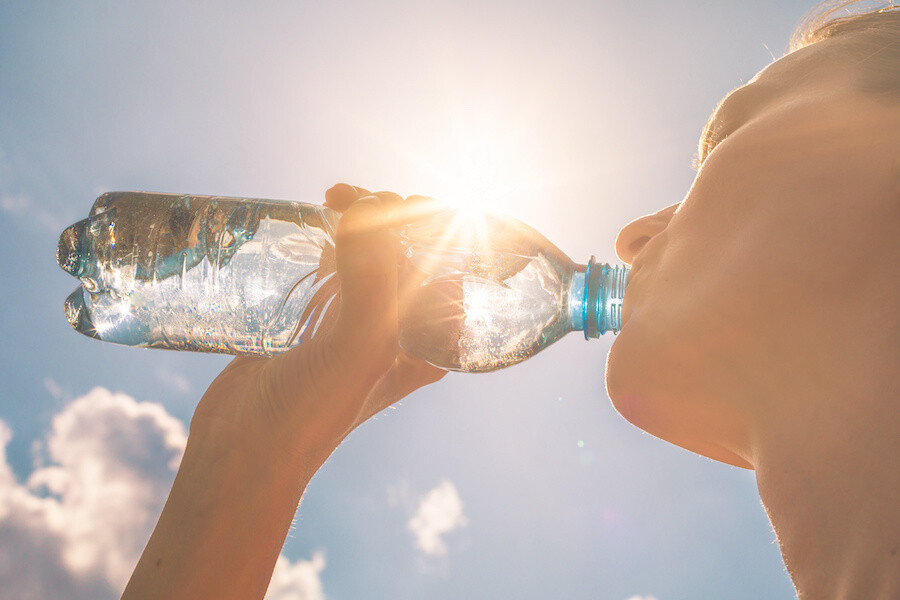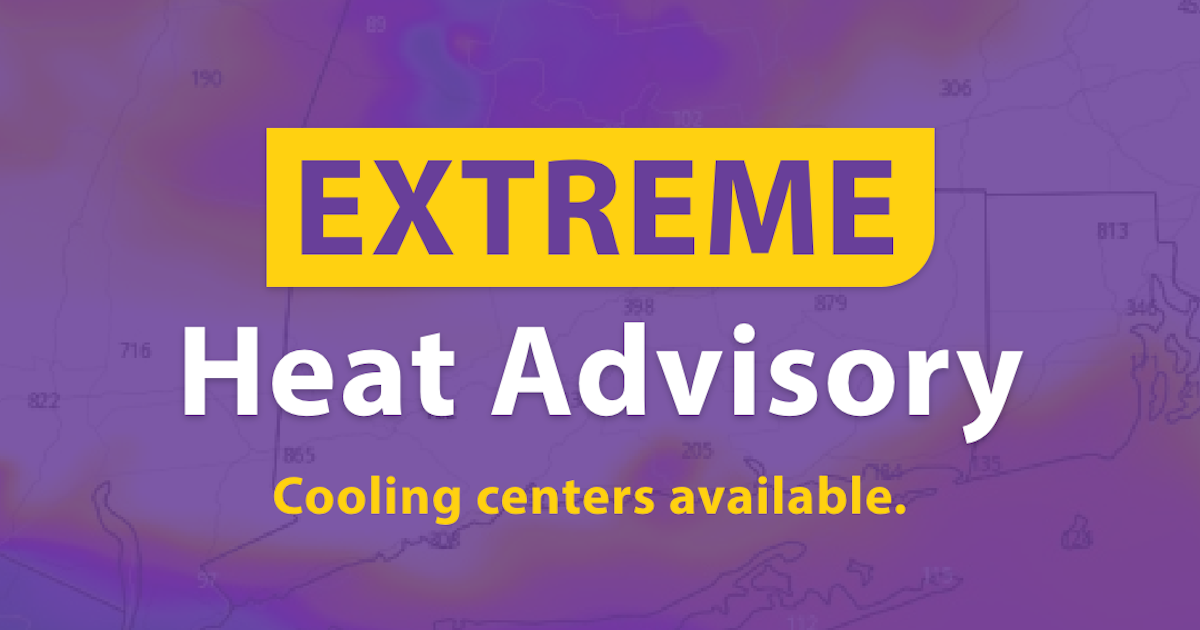Cooling Centers Will Open and Can be Located by Calling 2-1-1 or Visiting 211ct.org
Governor Ned Lamont today announced that due to a weather forecast indicating that Connecticut will experience a multi-day stretch of exceptionally hot and humid conditions, he is directing Connecticut’s Extreme Hot Weather Protocol to be activated effective at noon on Sunday, June 22, 2025, and remaining in effect through at least 8:00 p.m. on Wednesday, June 25, 2025.
This is the first time this year that the protocol is being activated. The current forecast shows that temperatures will exceed 90 degrees over this period, with a heat index that could range from 100 to 105 degrees.
The purpose of activating the protocol is to ensure that the most vulnerable populations receive protection from the hot conditions. While enacted, a system is set up for state agencies, municipalities, and other partners to coordinate with United Way 2-1-1 to make sure that information regarding cooling centers is available statewide, providing a location for those in need of relief.
Cooling centers will be available throughout the state. Anyone in need of a place to get out of the heat can locate their nearest cooling center by calling 2-1-1 or viewing the list that will be published online at 211ct.org.
“It looks like we are about to experience our first heat wave of the season, and when temperatures get this hot, people who are most vulnerable, especially those who are of a certain age or who have certain medical conditions, should take the necessary precautions to stay cool,” Governor Lamont said. “We are working with our partners to get cooling centers open across Connecticut. Anyone who needs a place to get some relief can call 2-1-1 or visit 211ct.org to get directed to their nearest cooling center. Additionally, our friends at United Way 2-1-1 can help connect anyone in need with the transportation necessary to get to a cooling center.”
The following actions are implemented while Connecticut’s Extreme Hot Weather Protocol is enacted:
- The Connecticut Department of Emergency Services and Public Protection’s Division of Emergency Management and Homeland Security uses its WebEOC communications network, which is an internet-based system that enables local, regional, and state emergency management officials and first responders to share up-to-date information about a variety of situations and conditions.
- Municipalities and other partners submit information on cooling center openings into the WebEOC, which provides a real-time database on the availability of these locations statewide. United Way 2-1-1 uses the system to act as a clearinghouse to assist residents in locating a cooling center.
- Regional coordinators from the Division of Emergency Management and Homeland Security monitor WebEOC to respond to any requests from municipalities for state assistance.
- The energy utility companies provide the state with regular updates regarding the impact of the weather conditions on their respective utilities throughout the protocol.
Although anyone can suffer from heat-related illness, some people are at greater risk than others:
- Infants and young children are sensitive to the effects of high temperatures and rely on others to regulate their environments and provide adequate liquids.
- People 65 years of age or older may not compensate for heat stress efficiently and are less likely to sense and respond to changes in temperature.
- People who are overweight may be prone to heat sickness because of their tendency to retain more body heat.
- People who overexert during work or exercise may become dehydrated and susceptible to heat sickness.
- People who are physically ill, especially those with heart disease or high blood pressure, or who take certain medications, such as for depression, insomnia, or poor circulation, may be affected by extreme heat.
Some prevention tips to stay safe in extreme heat include:
- Keep your body temperature cool to avoid heat-related illness.
- Stay in air-conditioned buildings as much as possible. If you must be outdoors, try to limit your outdoor activity to the morning and evening. Try to rest often in shady areas so that your body has a chance to cool off.
- Find an air-conditioned location. (Call 2-1-1 for a list of cooling centers.) Do not rely on a fan as your primary cooling device.
- Avoid direct sunlight.
- Wear lightweight, light-colored clothing.
- Take cool showers or baths.
- Check on those most at-risk several times a day.
- Pets that cannot be brought indoors should be provided with ready access to water and shade to keep them cool.
- Never leave pets inside parked vehicles because temperatures can soar to life-threatening levels within minutes.
Everyone is also reminded to stay hydrated during periods of extreme heat. As we lose fluid through sweat, dehydration is common during very high temperatures. It is strongly encouraged to:
- Drink more water than usual.
- Don’t wait until you’re thirsty to drink more fluids.
- Drink two to four cups of water every hour while working or exercising outside.
- Avoid alcohol or liquids containing high amounts of sugar.
- Remind others to drink enough water.


